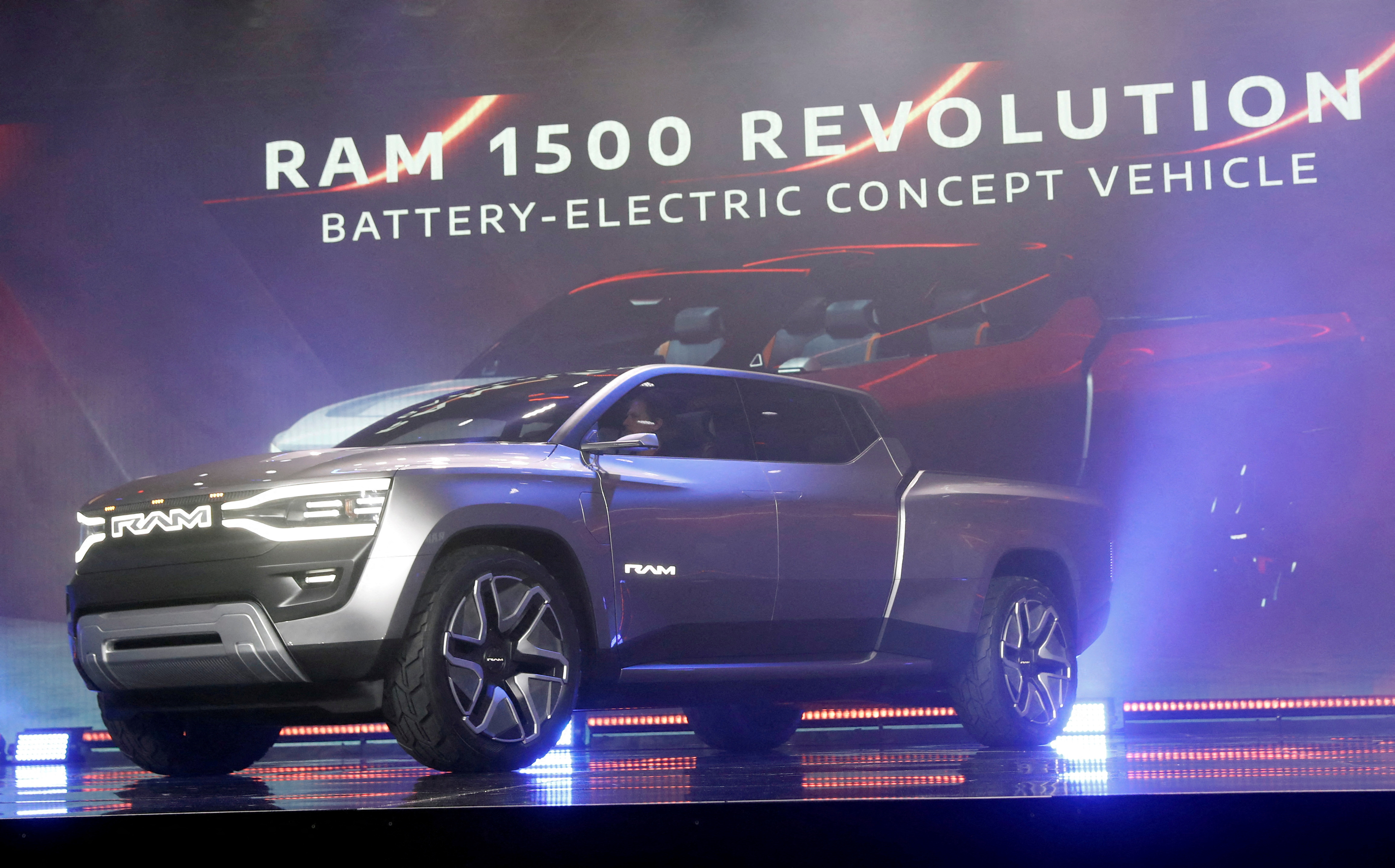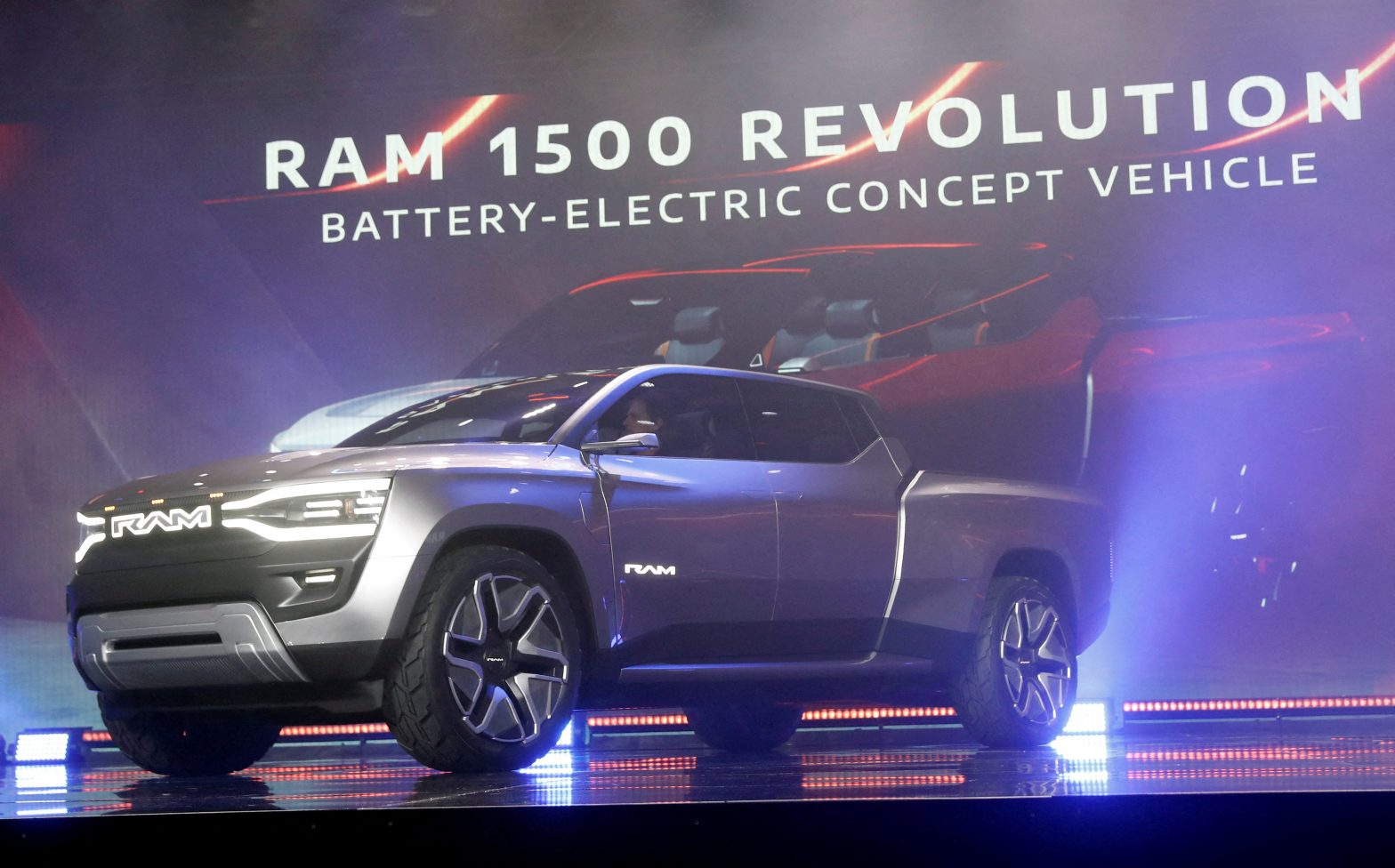
The Ram 1500 Revolution electric concept pickup truck is unveiled during a Stellantis keynote address at CES 2023, an annual consumer electronics trade show, in Las Vegas, Nevada, U.S. January 5, 2023. REUTERS/Steve Marcus/File Photo Acquire Licensing Rights
DETROIT, Nov 7 (Reuters) – Stellantis (STLAM.MI) will offer a previously undisclosed plug-in hybrid model of its Ram pickup truck, called Ramcharger, and phase out V-8 Hemi engines as part of its strategy to cut the CO2 emissions of its North American fleet.
Stellantis will no longer offer the popular Hemi V-8 engine in 2025-model light-duty Ram pickup trucks and instead will offer six-cylinder combustion engines, in addition to the previously announced battery-electric Ram REV and the Ramcharger, the automaker said.
Selling more hybrid and electric trucks and improving the fuel efficiency of Ram combustion models is critical to Chrysler parent Stellantis. The company is paying fines for failing to meet U.S. emissions standards, and faces steeper penalties as those rules get tighter.
A Hemi V-8 will still be offered in Ram heavy-duty trucks. The company has not disclosed future production plans for light-duty Ram Classic trucks, which are based on previous generation Ram designs. Hemi engines are currently available on certain Ram Classic models.
The plug-in hybrid Ramcharger model, scheduled to go on sale by 2025, is a bet that many Detroit brand buyers are not ready for an all-electric pickup like the Tesla (TSLA.O) Cybertruck, Rivian (RIVN.O) R1T, Ford’s (F.N) F-150 Lightning or the all-electric Chevy Silverado from General Motors (GM.N).
GM and Ford have scaled back production plans for their electric trucks as demand has fallen short of earlier goals.
For the near term, most Ram trucks will be powered by combustion engines. Starting in the first quarter of 2024, the eight-cylinder Hemi that has been central to light-duty Ram pickup marketing since 2003 will be phased out.
Instead, 2025 light-duty Ram trucks will be powered by 3.0-liter, inline six-cylinder “Hurricane” engines – including one version rated at 540 horsepower – or an older 3.6-liter V-6, Ram officials said during a media briefing.
Inline six-cylinder engines once were common in U.S. pickup trucks. But the Detroit brands shifted to V-8 engines in the 1980s and 1990s as customers demanded more power. Now, Detroit automakers are moving back to smaller, high-output engines and electrified powertrains to comply with stricter CO2 emissions standards.
Ford said in September it plans for up to 20% of its redesigned F-150 lineup to sell with hybrid powertrains.
GM offers four-cylinder and eight-cylinder gas engines and a diesel powertrain in its Chevy Silverado and GMC Sierra trucks. GM is ramping up production of all-electric Silverado and Sierras but has not announced plans for hybrid models.
Stellantis has previously said it will sell an all-electric Ram pickup called the Ram Rev starting in late 2024. Stellantis executives said the Ramcharger will be a more affordable and practical alternative for customers who want better fuel economy but are worried about driving range, access to charging and towing capability.
The Ramcharger will use a six-cylinder gasoline engine as a generator to recharge the truck’s 92 kWh battery pack. The all-electric Ram REV has a 168 kWh battery pack in the base model that costs thousands more.
“Think of the cost per kilowatt-hour,” Ram brand chief Tim Kuniskis said in a media briefing, though he would not give a precise figure for the cost difference.
Reporting by Joe White in Detroit
Editing by Matthew Lewis
Our Standards: The Thomson Reuters Trust Principles.
